The Handbook of Counselling Psychology
Life Space Mapping
Possibly the most important point to bear in mind is that there is no wrong way to complete a Life Space Map (LSM). It is a process and a tool for users to interpret as they wish. A second important point is that the LSM is not an end in itself. The process of completing it will often promote personal reflection, but much of the learning comes from musing on the completed map and, if possible, sharing and talking about it with others.
Below are a selection of LSMs created by students embarking on undergraduate or masters level studies in person centred counselling. They illustrate a number of the different approaches that can be adopted, and the variations in content and amount of detail that may be included. I have ethical approval for the use of these maps and all contributors granted permission for them to be used in this way. Nonetheless, I have not used any maps which gave significant amounts of potentially identifying personal data, selecting only those which, at most, included the occasional first name. I believe, however, that the use of ‘real’ rather than composite or artificially constructed maps better communicates their dynamic and often ambiguous nature.
The students who completed these maps did so as a part of the personal and professional development element in the course, and they had at their disposal large sheets of paper, felt tip pens, chalks, multi-coloured ‘post-it’ notes, and a large floor area in which to work. They generally spent about 20 minutes constructing their maps – sometimes comparing notes as they went along – and then another 40 minutes or so discussing their maps in small groups of 3 or 4. They subsequently completed reflective journal entries that recorded their feelings about completing the LSM, their response to it, and what they felt they had learned from the activity.
Whilst a recurring metaphor in the LSMs was the focal person as the ‘sun’ at the centre of a ‘solar system’, the LSMs took many forms …
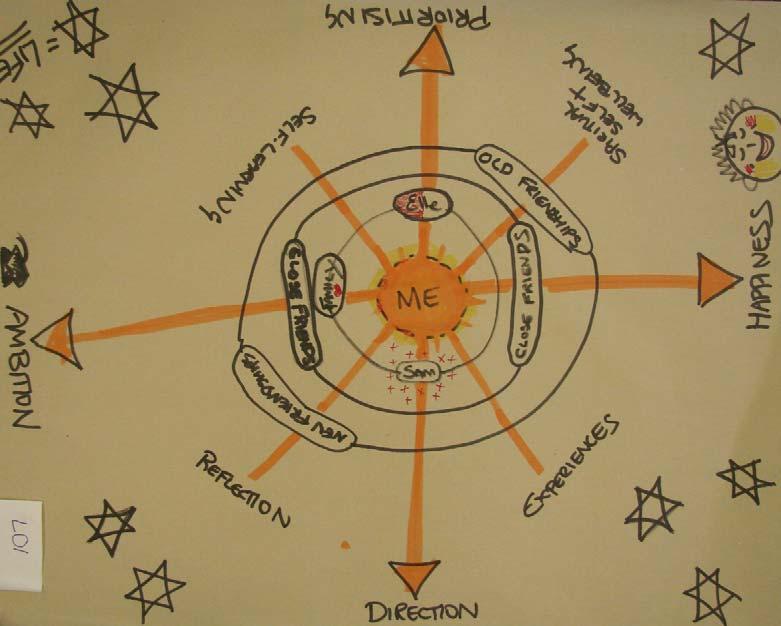
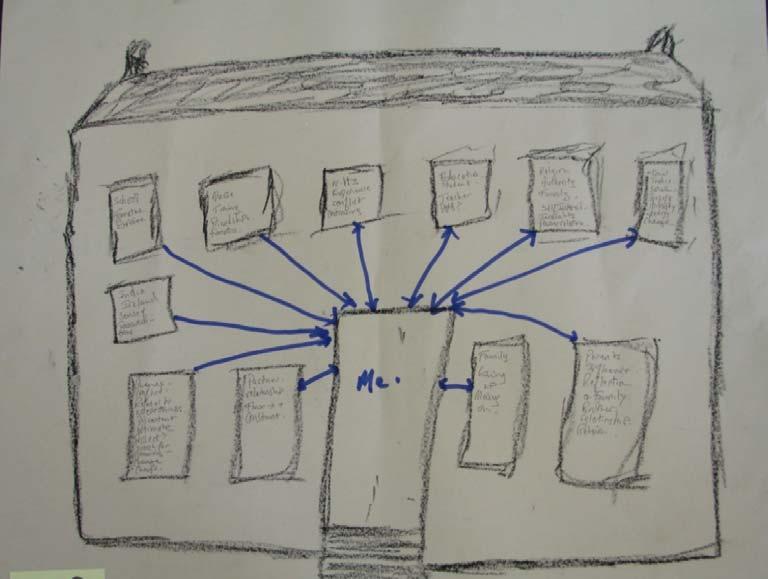
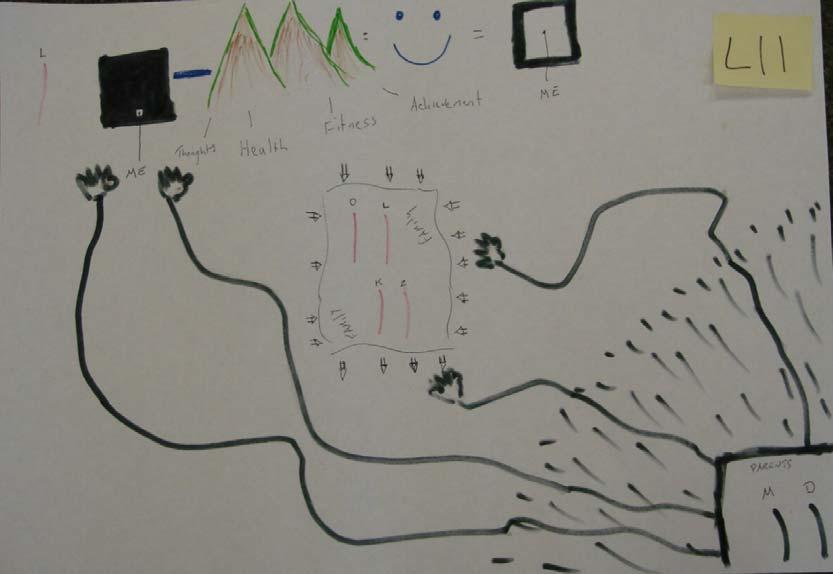
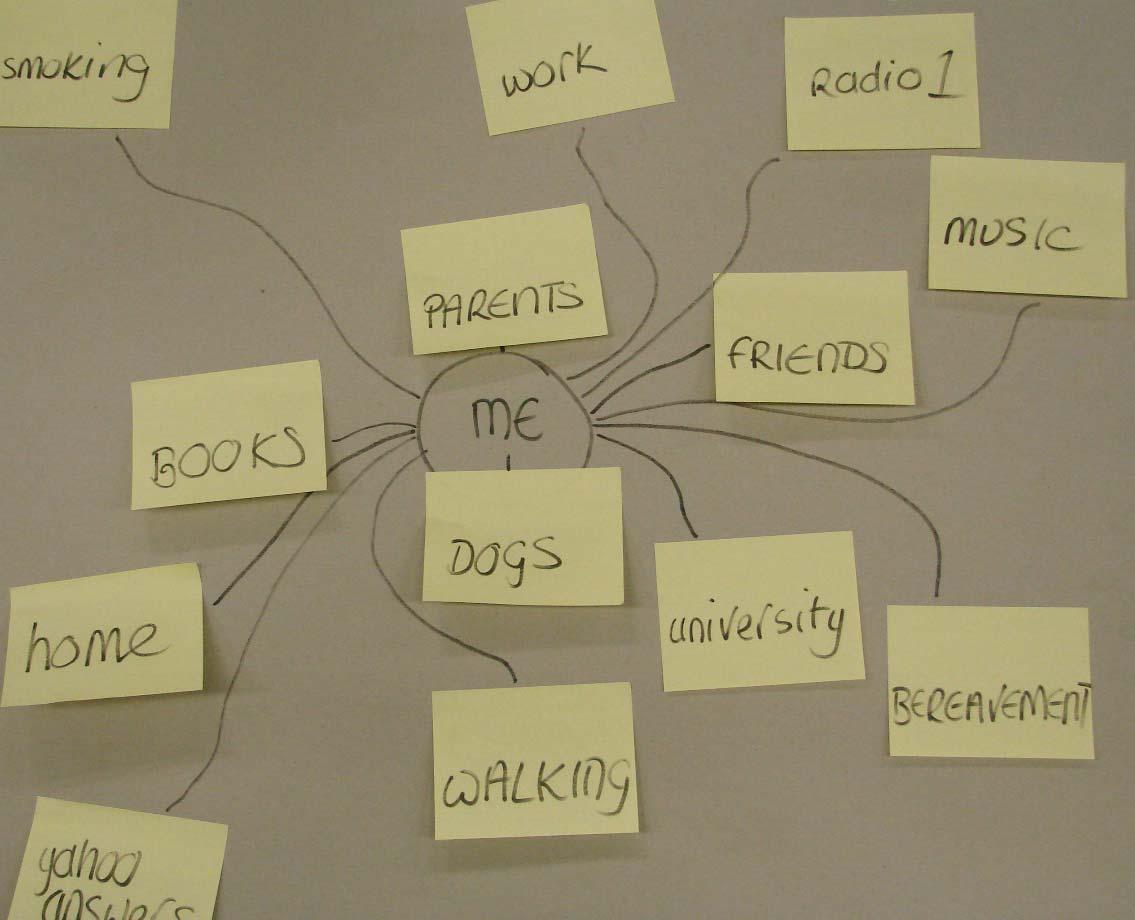
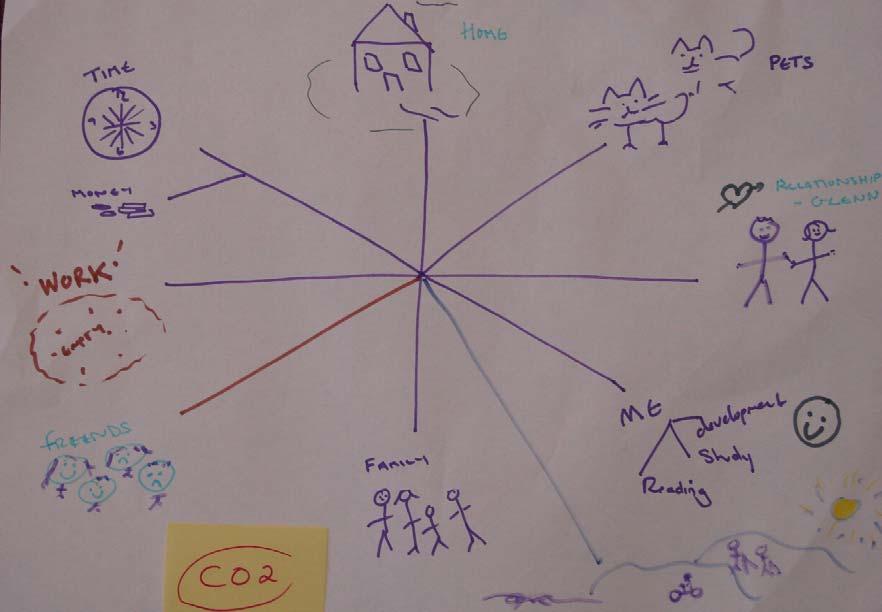
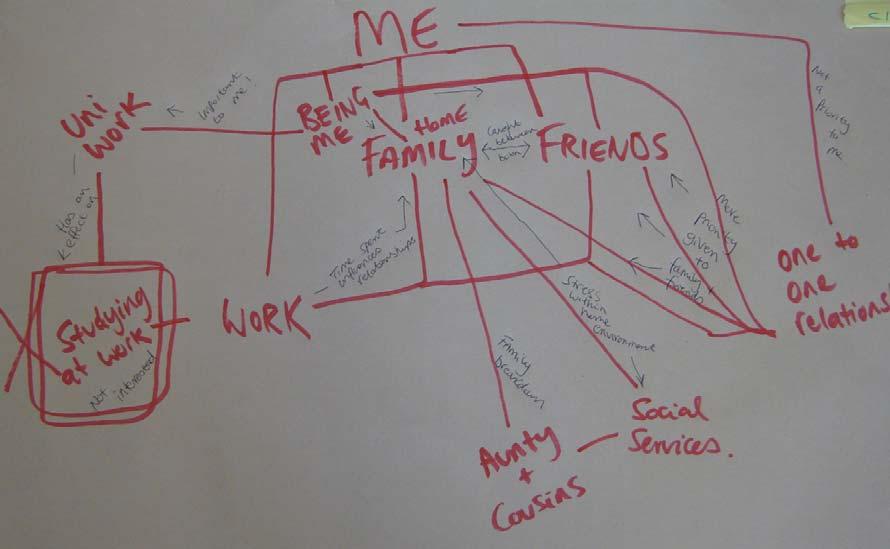
The degree of explicit psychological and emotional expressiveness also varied …
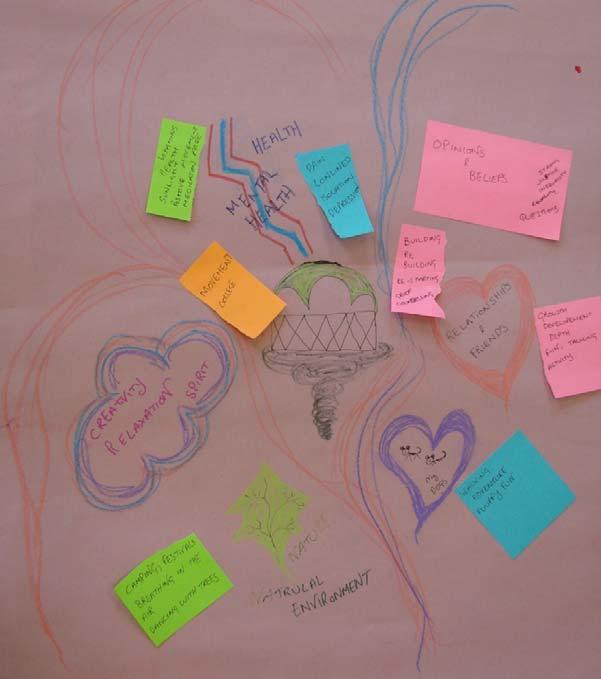

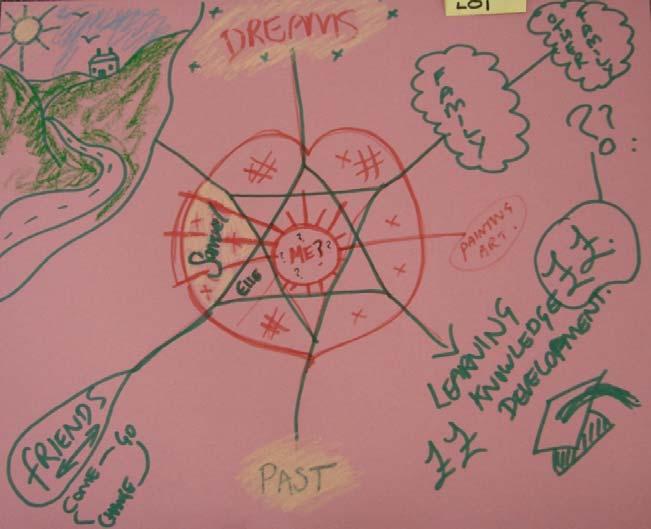
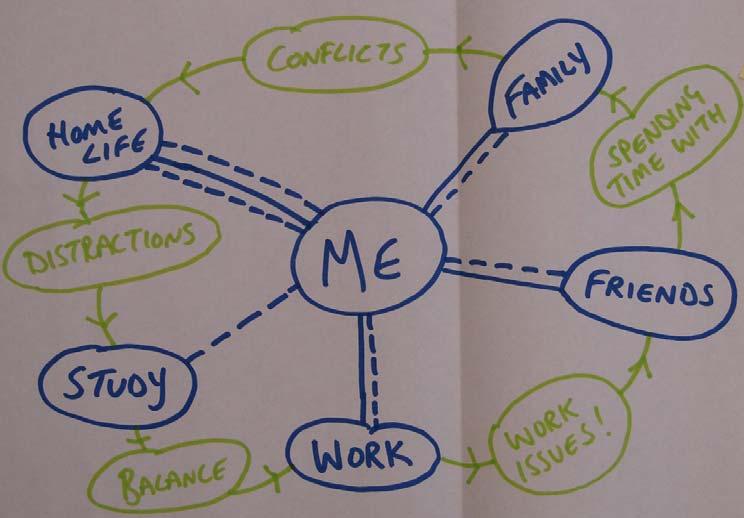
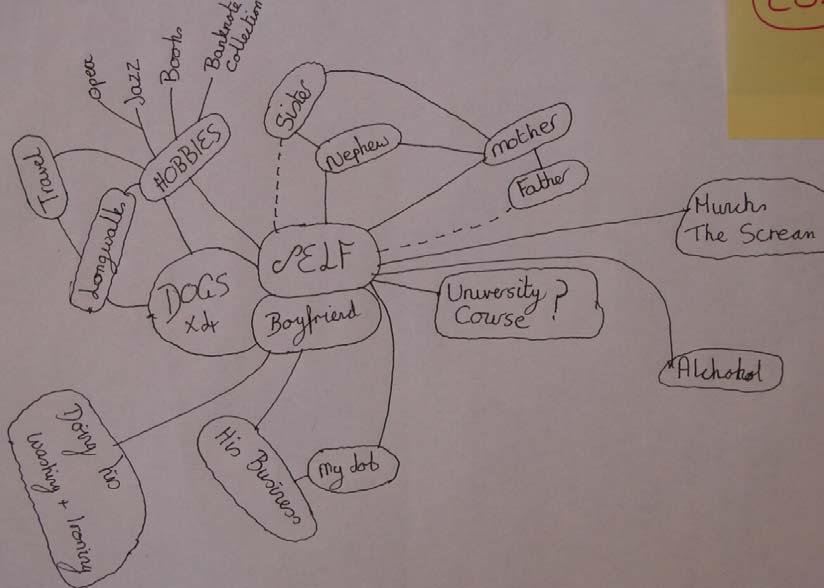
Some maps showed extensive use of ‘post-it’ notes …
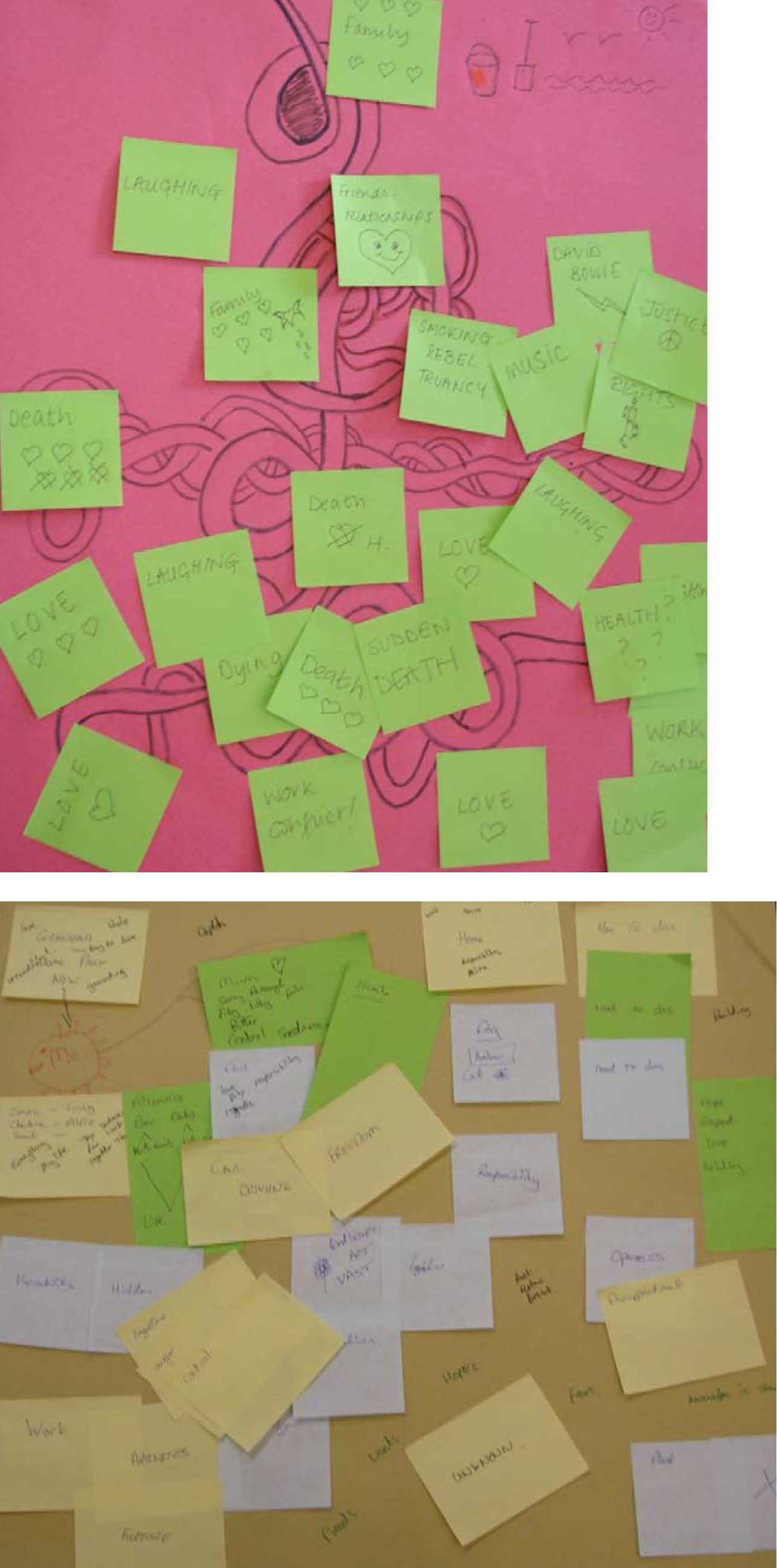
In others, the ‘post-it’ notes were not used at all …
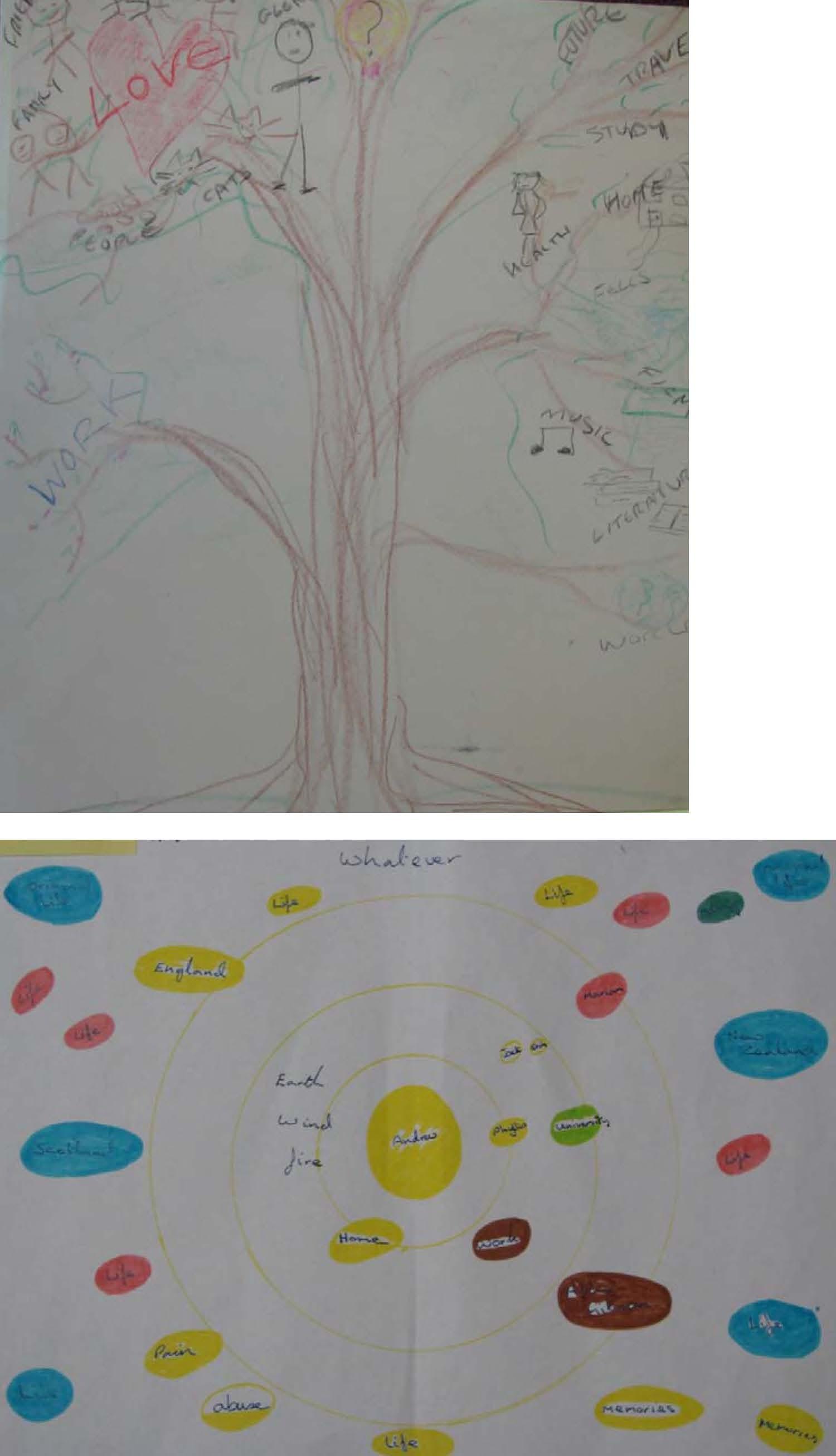
Some LSMs included a great deal of detail …
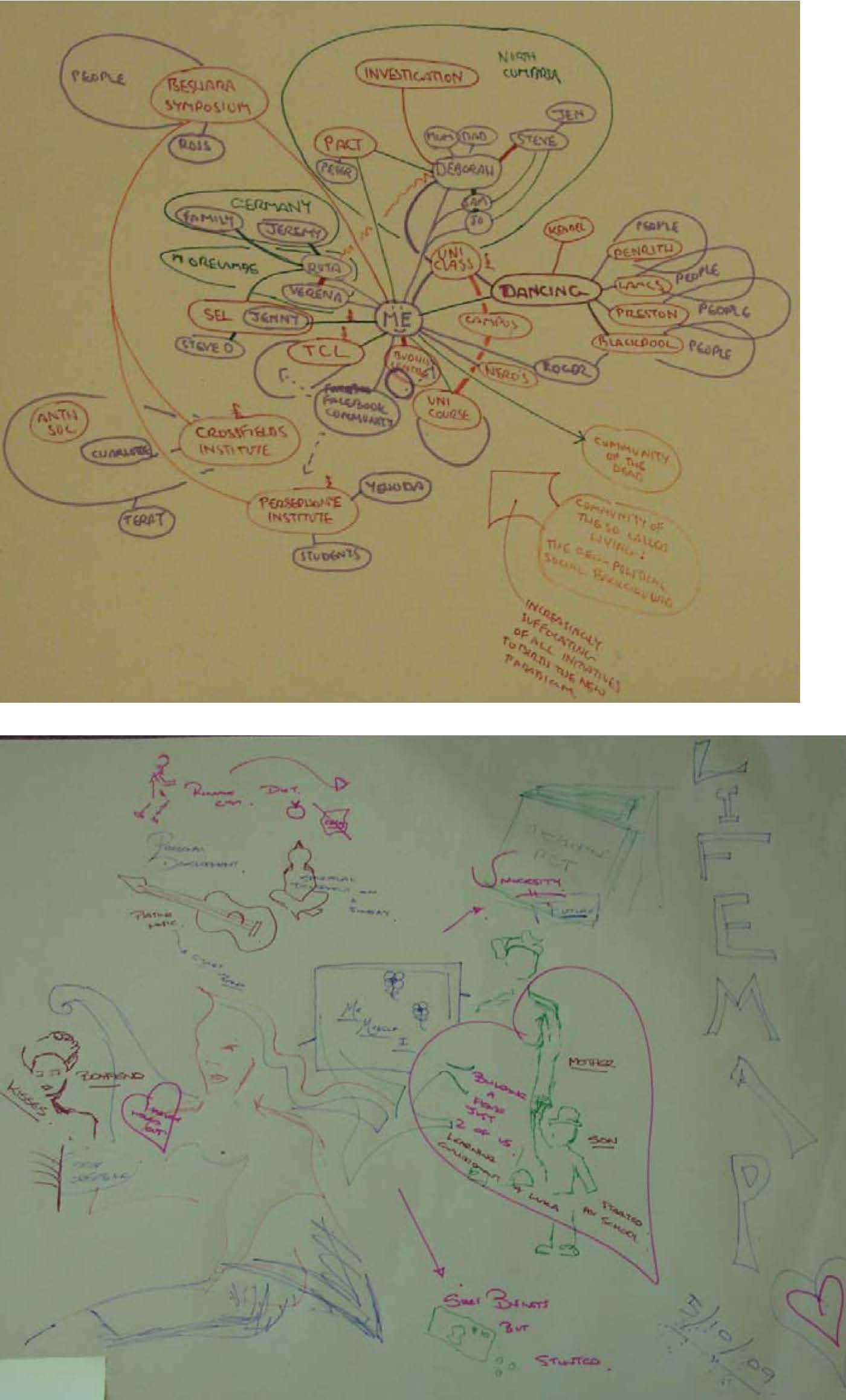
Some told a narrative across time …

Most LSMs included some text …
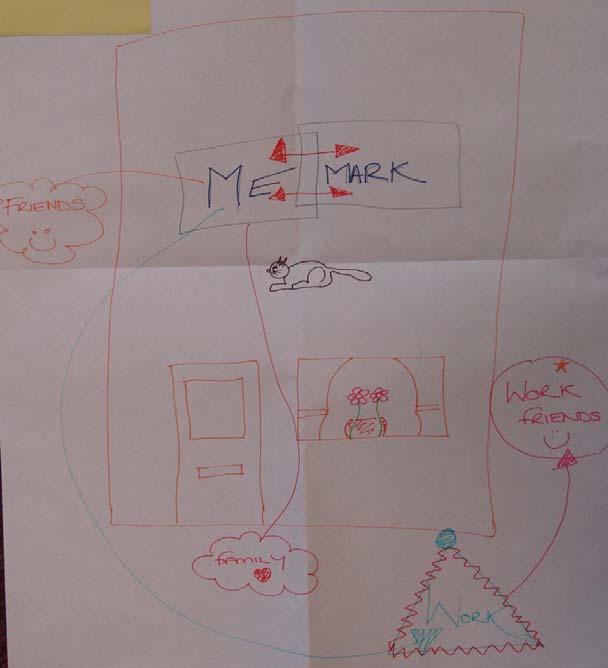
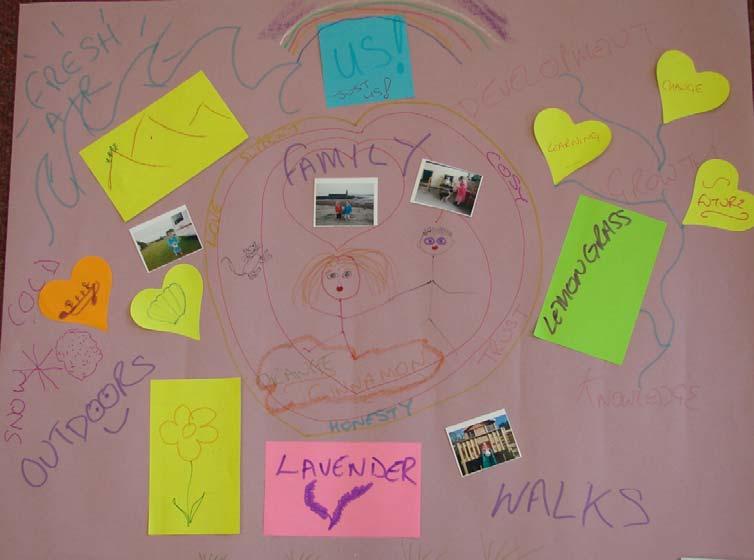
A few were entirely representational …
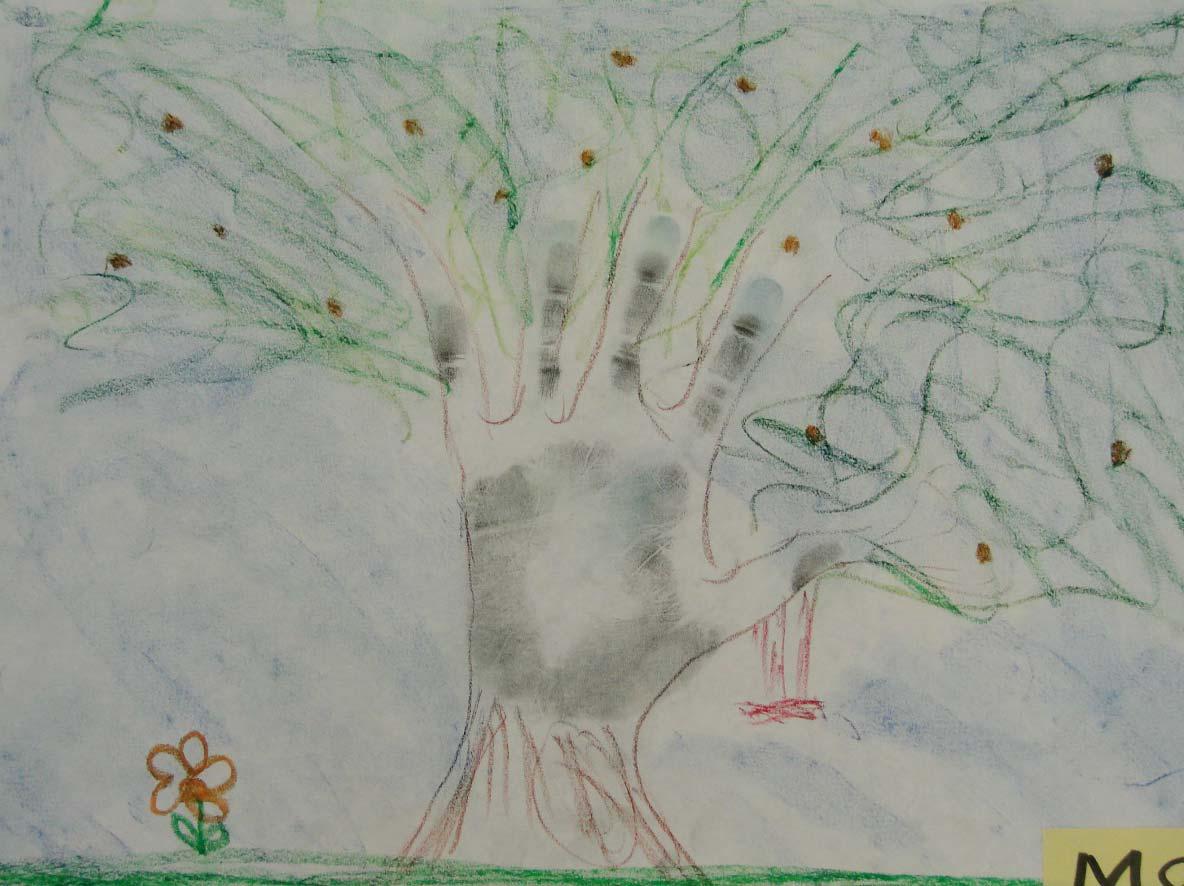
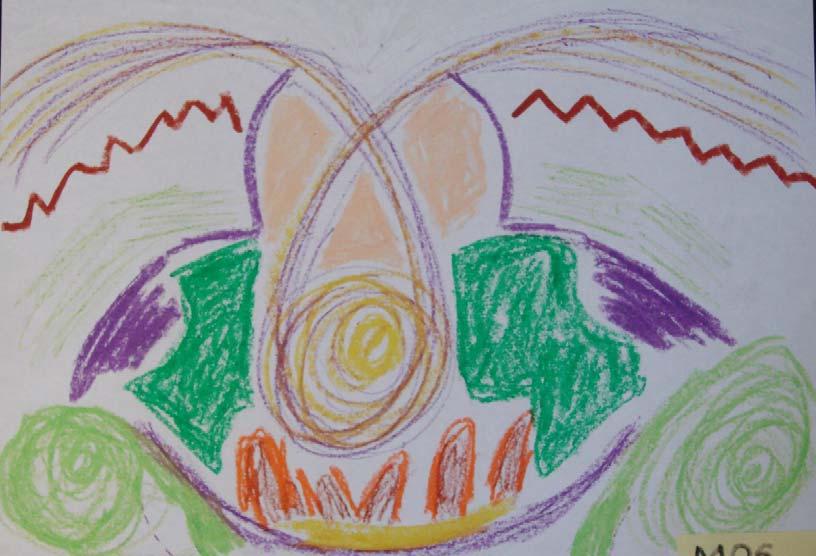
I have not offered detailed interpretations of the LSMs presented, largely because it is a key strand of my argument that it is not my role to do so. Like beauty, which is in the eye of the beholder, I would argue that interpretation of LSMs is a role for their creator – possibly with the assistance of a non-directive facilitator. Nonetheless, it is clear that these maps can vary along a number of dimensions – including the amount of detail and the type of content, the use of words versus the use of images, general versus specific references, explicit emotional expressiveness, and the representation of time.
Written reflections and feedback on the activity are largely positive, indicating learning, insight and/or enjoyment ….
‘I like my map and enjoyed making it.’
‘It was an enjoyable experience – allowed me freedom to be creative. It concentrated my mind on what is important for me right now and also looked to the future – where I am going.’
‘I have found it was therapeutic and it felt good to have it written down and have it in writing – just to see where my emotional state is and to use pictures, writing and colour to represent how I feel.’
‘The mapping made me think about the importance of the actual links between elements of influence on my life, individuals, relationships. The intersection of some people/elements reinforced some understandings of how I worked with people, also developed ideas about how some relationships may be ‘healthier’ than others – e.g. an acceptable/desirable closeness or a comfortable distance. Interrelatedness came across very strongly in thinking out how I would depict, then link, the various aspects of life presented. The learning was in the thinking through the forms of representation, and how they could be expressed.’
‘It was a very valid exercise for me. It helped me to think of my life in new terms. I would never have considered representing my life in this way, but it did produce very useful observations via discussion within the group. I have learned that recognition of my own emotions remains an area to develop and that my life situation is in places isolated.’
‘I found it interesting and challenging to use images and symbols rather than language, which I am generally much more comfortable with. The process of self-reflection and then of discussion helped to throw up some new ideas about areas I was perhaps trying to supress or distance myself from by choosing to make those symbols smaller or further away, and the reactions people [in my small group] had to the symbols – whether they felt warm/threatening/hopeful etc., as well as how I had spoken about them.’
‘I have learned that there is value in my not over-thinking, but freely expressing something and then looking, interpreting, this expression later. It is through a dialogue and verbalising this expression that I felt the benefit of this activity came, and brought into focus the areas of my life where there may be work to do. It helped me to access areas of myself which are perhaps out of conscious awareness.’
Not all of the learning was revelatory. Sometimes the activity confirmed or reinforced what the person already knew, but this did not mean the process had no value …
‘Although I did not learn anything specific in terms of “where I am now”, it did help to contextualise some of my feelings and emotions, and seeing abstract feelings given substance helped to place new meanings or emphasis on some old suppositions and feelings.’
‘No new revelations as such on the map, but I did gain a better understanding of the different parts of me.’
Whilst no one declined to create a LSM, a few expressed some reluctance …
‘Learning happens, at least for me, only when I am ready and open to the process of learning. I did not want to complete my life space map this morning. I felt quite a degree of resistance to it. Consequently, it took a long time to get into any kind of reflective space in my head. … That said, I do think that representing my life in a way which moves me away from prose is expansive and valuable. Maybe I’ll do it again in my own time for my own learning.’
‘Some reluctance turned to enthusiasm during the activity. Discovery of more uncertainties than I would have previously thought. A definite wish to jettison a lot of the past and to look forward to the future with hope. There is a long journey ahead, but so very pleased to have started it now. Carpe diem!’
Others, whilst not resistant to the activity, found it hard to begin …
‘Interesting to do the activity, though initially I did wonder where to start. Once that was sorted everything just followed.’
‘I thought a lot first of what and how I wanted to portray myself, what parts of myself etc. As soon as I started, the process of identification/clarification started to flow more easily. Enjoyed doing the exercise. At times still struggling to find the right words.’
There were occasional expressions of dissatisfaction with the LSM produced, although it could still trigger learning …
‘I felt pressurised due to time constraints and therefore feel I have not given it the due consideration it deserves.’
‘I ended up being a bit disappointed, not with the process, rather my result. It was somewhat muddled. I did find it interesting that I still chose a scientific/mathematical way of showing things (a Venn diagram). I probably see things as definite not abstract. Therefore I avoided symbols and a more painterly technique. In terms of the content I think that I already knew that I should be more whole as opposed to the fragmentation that the diagram/map shows. The medium that I chose probably encouraged this. Next time I will try to find a way that will hopefully be more holistic.’
Coercion to complete a LSM is likely to be counterproductive. Whilst encouragement may be appropriate – perhaps if someone sees ‘playing’ with felt tip pens and crayons as too juvenile, or is concerned about their artistic skills – the activity, as emphasised, is not an end in itself, and most is to be gained when we are ‘ready and open to the process of learning’.
Despite my hesitation in interpreting LSMs on behalf of those completing them, I do think there are a number of models of usefulness that can be instructive perspectives from which they can be explored. As indicated in the chapter to which this is an addendum, I would include notions of transition, stability zones and support convoys amongst this list, but I imagine that they can be added to by concepts and issues addressed elsewhere in The Handbook of Counselling Psychology, in your studies, or in your practice.
